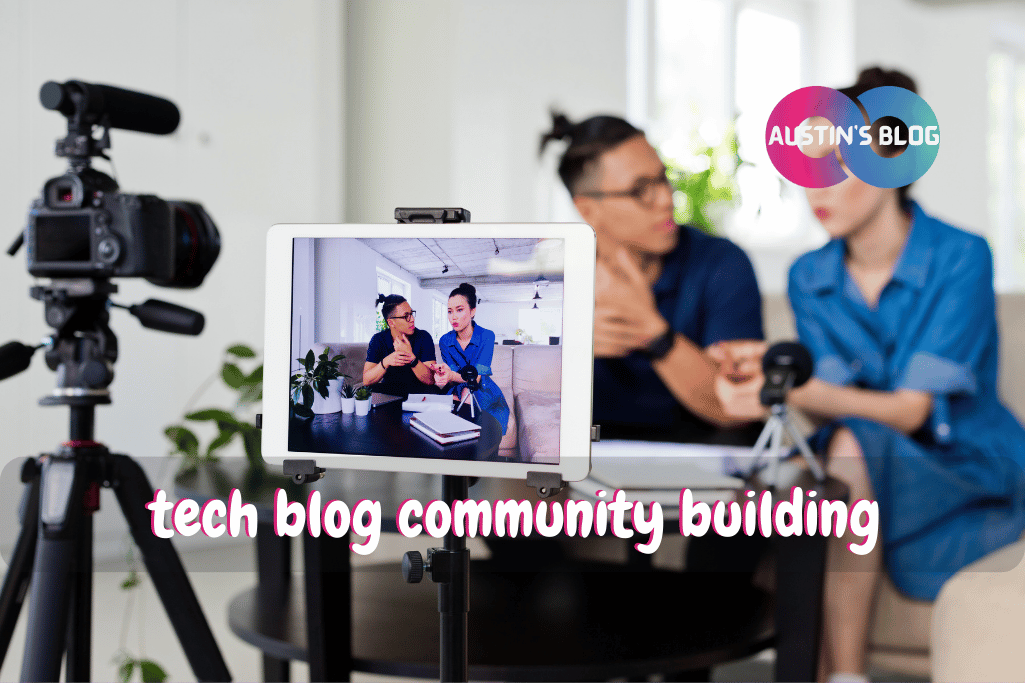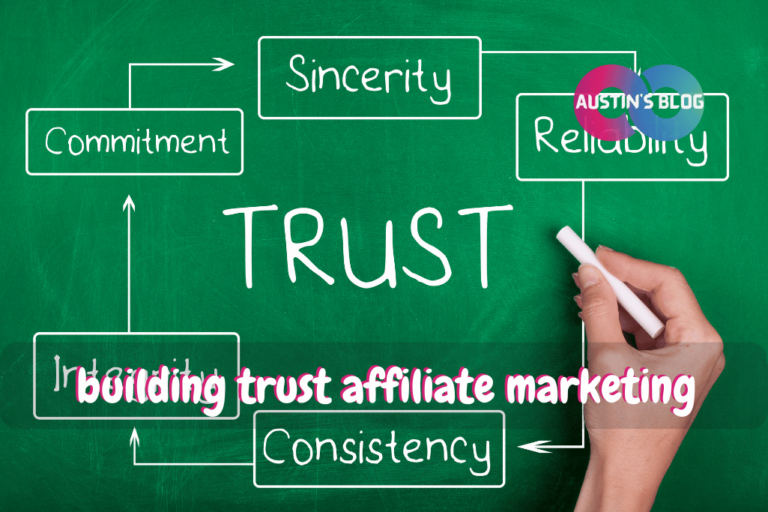Tech Blog Community Building: From Readers to Raving Fans
Introduction:
Did you know that 77% of internet users read blogs regularly? [1], [2].
That’s right, folks – we’re talking billions of potential community members out there. But here’s the kicker: most tech blogs have about as much community engagement as a chatbot talking to itself.
Why? Because they’re treating community building like it’s an optional feature, not the core of their blogging operating system.
This is why tech blog community building needs to be incorporated into the tech blog writing strategy
Picture this: you’ve just written a mind-blowing article about the latest breakthrough in quantum computing.
Your SEO is on point, your graphics are slicker than a freshly thermal-pasted CPU, but your comment section? Crickets. Tumbleweeds.
The digital equivalent of a ghost town.
Trust me, I’ve been there. When I first started my tech blog, I thought community would magically appear if I just kept writing good content.
I was like a kid building an elaborate LEGO structure, wondering why no one was coming to play.
But then I discovered the secret sauce of community building, and let me tell you, it was like upgrading from dial-up to fiber optic.
In this guide, we’re going to explore the art of turning your tech blog into a bustling digital neighborhood.
We’ll cover everything from fostering engaging discussions to creating events that’ll make your readers feel like they’ve got VIP passes to the hottest tech conference in town.
Whether you’re blogging about coding, gadgets, or the intricacies of AI ethics, these strategies will help you build a community that’s more tight-knit than a perfectly cable-managed PC build.
So, grab your favorite community-building tool (mine’s a virtual whiteboard and a lot of coffee), fire up that collaborative spirit, and let’s dive in.
It’s time to transform your tech blog from a monologue into a full-blown tech symposium!
Creating a Welcoming Digital Space: The Foundation of Community
Alright, digital architects, let’s kick things off by talking about the most crucial aspect of community building: creating a space where your tech enthusiasts actually want to hang out.
It’s like designing the perfect LAN party setup, but instead of gaming rigs, we’re setting up the ideal environment for tech discussions.
When I first started focusing on community, my blog was about as welcoming as a Captcha test that asks you to identify traffic lights in blurry images.
Sure, the content was there, but it wasn’t exactly inviting people to stick around and chat.
Here’s how to create a digital space that screams “Welcome, tech lovers!” louder than a startup’s neon sign:
1. User-Friendly Design:
Make your blog easy to navigate. I once had a menu structure so complex it made the Windows registry look straightforward. Simplifying it increased my engagement tenfold.
2. Clear Community Guidelines:
Set the tone for interactions. My guidelines are pinned at the top of my comment section.
They’re friendly but firm, like a cool teacher who lets you call them by their first name but still expects your homework on time.
3. Responsive Comment System:
Choose a comment system that’s easy to use and encourages discussion. I switched from a basic WordPress comment system to Disqus, and suddenly my comment section was livelier than a Reddit thread about a new GPU release.
4. Highlight Top Contributors:
Create a “Hall of Fame” for your most active community members. I have a sidebar widget that showcases top commenters. It’s like giving out digital gold stars, and people love it.
5. Multi-Platform Presence:
Don’t limit your community to just your blog. I extended to Discord and Twitter, creating a tech ecosystem that rivals Apple’s walled garden (but with more freedom and fewer dongles).
6. Mobile Optimization:
Ensure your community features work smoothly on mobile. I learned this the hard way when I realized half my readers couldn’t comment easily from their phones. Fixing that was like opening the floodgates of engagement.
7. Accessibility:
Make sure your space is accessible to all. I added features like adjustable text size and high-contrast modes. It’s not just good practice; it’s about making everyone feel welcome in your tech haven.
Here’s a pro tip:
Create a “Start Here” page for newcomers. Mine includes a community tour, FAQs, and links to cornerstone content. It’s like giving new members a map to your digital city.
Remember, your goal is to create a space where tech enthusiasts feel at home.
I learned this lesson when I tried to make my blog look too “professional” and ended up with a space colder than liquid nitrogen.
Now, I aim for a vibe that’s more “cozy tech cafe” than “sterile computer lab.”
But here’s the catch – don’t go overboard with features. I once added so many community elements that my blog looked like the control panel of the Starship Enterprise.
Keep it simple, intuitive, and focused on what matters most: the content and the conversations.
Your digital space should feel like a welcoming tech hub. It should be the “Ah, I’ve found my people!” moment, not the “Where the heck do I click?” moment.
And most importantly, it should reflect the personality of your blog and your community.
So, roll up those sleeves, put on your UX designer hat, and start crafting a digital space that your fellow tech enthusiasts will love.
Because in the world of tech blog community building, a good foundation isn’t just important – it’s the difference between a thriving tech metropolis and a digital ghost town.
Let’s build something awesome!
Fostering Engaging Discussions: From Monologue to Dialogue
Alright, conversation catalysts, it’s time to talk about turning your tech blog from a one-way street into a bustling information superhighway.
We’re talking about fostering discussions so engaging that your readers will be more glued to your comment section than they are to unboxing videos of the latest iPhone.
When I first tried to get discussions going on my blog, it was like trying to start a fire with two damp sticks. I’d end my posts with a generic “What do you think?
Let me know in the comments!” and then crickets. Tumbleweeds. The digital equivalent of talking to myself at a party.
Here’s how to turn your comment section into the hottest debate club this side of Silicon Valley:
1. Ask Thought-Provoking Questions:
End your posts with specific, open-ended questions. Instead of “What do you think?”, I now ask things like “If you could add one feature to this new processor, what would it be and why?” It’s like throwing chum into shark-infested waters – the tech enthusiasts can’t resist.
2. Respond Promptly and Thoughtfully:
Be an active participant in your own comments section. I make it a rule to respond to every comment within 24 hours. It’s like being a good host at a party – you need to mingle!
3. Play Devil’s Advocate:
Don’t be afraid to respectfully challenge your readers’ opinions.
I once sparked a 200-comment thread by questioning the superiority of mechanical keyboards.
It was more heated than a MacBook running Crysis, but it was also incredibly engaging.
4. Highlight Interesting Comments:
Feature the best comments in your posts or newsletters. I have a “Comment of the Week” section in my newsletter. It’s like giving your commenters their 15 minutes of tech fame.
5. Create Debate-Worthy Content:
Write about controversial topics in tech. My article on “Is Python Replacing Java?” nearly broke my comment system with the flood of passionate responses.
6. Use Polls and Surveys:
Interactive elements can spark discussion. I use Twitter polls to gauge opinion on tech topics, then bring the results back to the blog for a deeper dive. It’s like creating a feedback loop of engagement.
7. Encourage Reader Contributions:
Ask for reader stories or experiences. My “Tech Fail Friday” series, where readers share their biggest tech blunders, is always a hit. It’s like group therapy for the technologically traumatized.
Here’s a pro tip:
Create a “Comment Etiquette” guide. Mine includes tips on how to disagree respectfully, how to format code in comments, and a strict “no flame wars” policy.
It’s like having a referee for your tech debates.
Remember, your goal is to create a space where people feel comfortable sharing their thoughts.
I learned this lesson when I let a heated debate about programming languages get out of hand.
Now, I moderate discussions with the careful balance of a zen master… who really, really cares about tech.
But here’s the catch – don’t force it. Not every post needs to be a debate starter. I once tried to spark a discussion about the history of USB ports.
Let’s just say it didn’t exactly set the world on fire. Know when to let a topic speak for itself.
Your discussions should feel like the best parts of a tech conference – passionate, informative, and maybe a little bit nerdy. It should be the “I can’t wait to see what people say about this!” moment, not the “I hope someone comments” moment.
And most importantly, it should be a place where every tech enthusiast, from the newbie to the veteran, feels heard and valued.
So, put on your moderator hat, brew a strong cup of coffee (you’ll need it for those late-night discussion monitoring sessions), and start fostering those engaging conversations.
Because in the world of tech blog community building, good discussions aren’t just engaging – they’re the lifeblood that keeps your community thriving, learning, and coming back for more.
Let’s get people talking!
Creating Community Events: From Blog to Tech Festival
Alright, event planners of the digital realm, it’s time to talk about turning your tech blog into the hottest ticket in town.
We’re not just talking about posts and comments anymore – we’re talking about creating events that’ll make your readers feel like they’ve got VIP passes to the Coachella of tech.
When I first thought about hosting events for my blog community, I was more nervous than a startup pitcher at a VC meeting.
What if no one shows up? What if it’s as exciting as watching paint dry on a motherboard? But let me tell you, once I got the hang of it, my events became the talk of the tech town.
Here’s how to create community events that’ll have your readers marking their calendars faster than they’d pre-order the latest gaming console:
1. Virtual Meetups:
Host regular video chat sessions. My monthly “Tech Talk Tuesday” on Zoom has become so popular, it’s like the tech equivalent of must-see TV.
We discuss the latest news, troubleshoot problems, and once had an impromptu debate about whether AI would ever truly understand memes.
2. AMAs (Ask Me Anything):
Invite industry experts for Q&A sessions.
I once had a senior engineer from a major tech company do an AMA. The questions were so good, he joked about hiring my entire community for his R&D team.
3. Hackathons:
Organize coding challenges or project buildathons.
My annual “24-Hour Tech Solution Sprint” has resulted in some amazing projects, including a smart mirror that displays terrible coding puns. It’s now the centerpiece of my home office.
4. Webinars and Workshops:
Host learning sessions on specific tech topics. My “From Noob to Pro” webinar series on various programming languages has a waiting list longer than the queue for a new iPhone release.
5. Book Clubs:
Yes, even for tech! My “Binary Book Club” where we read and discuss tech-related books has sparked some of the most profound discussions on my blog.
Who knew a book about the history of the transistor could be so controversial?
6. Tech Trivia Nights:
Host online quiz events. My monthly “Geek Streak” trivia night has become so competitive, I’m considering making a leaderboard trophy. It would be shaped like a golden floppy disk, of course.
7. Virtual Conferences:
Go big with a full-day or multi-day online event. My annual “FutureTech Forum” has grown from a small livestream to a multi-track event with keynote speakers.
It’s like TED Talks met Comic-Con, but for tech enthusiasts.
Here’s a pro tip:
Always have a backup plan.
Tech can be fickle (we should know!). During one live coding session, my internet decided to impersonate a dial-up connection.
Now I always have a pre-recorded segment ready, just in case. It’s like having a spare power supply – you hope you never need it, but you’re glad it’s there.
Remember, the goal is to create experiences that bring your community together. I learned this lesson when I tried to make every event super serious and educational.
Turns out, people also want to have fun! Now I make sure there’s always an element of entertainment, even in the most technical workshops.
But here’s the catch – don’t overdo it. I once tried to host weekly events and nearly burned out faster than an overclocked CPU without proper cooling.
Quality over quantity is key.
It’s better to have one amazing monthly event than four mediocre weekly ones.
Your events should feel like the best tech meetup ever, but in your pajamas (or whatever you code in – no judgment here).
It should be the “I can’t wait for next month’s event!” moment, not the “Oh, is that thing happening again?” moment.
And most importantly, it should be a place where your community can learn, laugh, and geek out together.
So, fire up that event planning software, start brainstorming those killer event ideas, and get ready to host the hottest gatherings in the tech blogosphere.
Because in the world of tech blog community building, great events aren’t just fun – they’re the epic boss battles that level up your entire community.
Let’s make some tech magic happen!
Nurturing Community Leaders: From Followers to Ambassadors
Alright, community cultivators, it’s time to talk about leveling up your most engaged members from casual commenters to full-fledged community leaders.
We’re talking about creating a team of tech ambassadors so awesome, they could give TED talks about your blog in their sleep.
When I first noticed some standout members in my community, I was more hesitant than a programmer pushing untested code to production.
What if giving them more responsibility backfires? What if it creates a tech blog caste system?
But let me tell you, empowering my top contributors was like upgrading from a single-core to a multi-core processor – suddenly, everything ran so much smoother.
Here’s how to nurture community leaders that’ll make your tech blog community thrive faster than Moore’s Law predicted:
1. Identify Potential Leaders:
Look for consistently helpful, positive, and knowledgeable members. I use a point system based on comment quality, forum helpfulness, and event participation.
It’s like a video game XP system, but for tech community engagement.
2. Create a Mentorship Program:
Pair experienced members with newbies. My “Tech Buddy” system has not only helped newcomers feel welcome but has also given experienced members a sense of purpose.
It’s like creating a tech support network, but with more camaraderie and fewer hold times.
3. Delegate Responsibilities:
Give trusted members moderation powers or specific roles. I have “Topic Guardians” who help moderate discussions in their areas of expertise.
One member’s moderation of our coding subforum is so good, I’m pretty sure he dreams in regex.
4. Spotlight Your Stars:
Regularly feature top contributors in your content. My “Community Champion” series, where I interview standout members, is more popular than unboxing videos of the latest GPU. It’s like creating tech blog celebrities, minus the paparazzi.
5. Create an Advisory Board:
Form a group of top members to give input on blog direction and community initiatives. My “Tech Council” has come up with ideas so good, I’m considering giving them stock options (if I had any to give).
6. Provide Exclusive Opportunities:
Offer leadership roles in events or special projects. When I let a top member co-host a webinar, the engagement was higher than the number of open tabs in a developer’s browser.
7. Recognize and Reward:
Implement a badge or rank system to acknowledge contributions. My community ranks, from “N00b” to “Tech Titan,” are coveted more than verified checkmarks on social media.
Here’s a pro tip:
Create a private channel for your community leaders. My “Inner Circuit” Discord channel is where we discuss community issues, plan events, and occasionally share terrible tech puns.
It’s like a secret clubhouse, but with more discussions about optimal database structures.
Remember, the goal is to create a sense of ownership and pride in the community. I learned this lesson when I tried to micromanage everything.
Letting go and trusting my community leaders was like finally deleting those “just in case” files from my hard drive – terrifying at first, but ultimately freeing and beneficial.
But here’s the catch – be careful not to create an elitist atmosphere. I once had a member complain that they felt like they were in tech high school, complete with a “popular crowd.” Now I make sure to emphasize that every contribution, big or small, is valued.
Your community leaders should feel like the Avengers of your tech blog – a diverse team of superheroes, each with their own special skills, working together to make the community awesome.
It should be the “I’m proud to be part of this” moment, not the “It’s us vs. them” moment.
And most importantly, it should be a system that constantly encourages and enables more members to step up and lead.
So, put on your talent scout hat, start identifying those standout members, and begin nurturing the next generation of tech community leaders.
Because in the world of tech blog community building, great leaders aren’t just helpful – they’re the key to creating a self-sustaining, ever-growing tech ecosystem that’ll make your blog the place to be for tech enthusiasts everywhere.
Measuring and Growing Your Community: From Guesswork to Data-Driven Decisions
Alright, data devotees, it’s time to put on our analyst hats and talk about measuring and growing your tech blog community.
Because let’s face it, in the tech world, if you can’t measure it, did it really happen?
It’s like trying to optimize code without running any benchmarks – you might be making progress, but you’d have no idea how much or in what direction.
When I first started trying to gauge the health of my community, I was about as scientific as a fortune cookie. “Hmm, feels like we had a good month.
The vibes were positive!” But let me tell you, once I started actually measuring things, it was like putting on glasses for the first time – suddenly, everything came into focus.
Here’s how to measure and grow your community with the precision of a perfectly calibrated laser:
1. Define Your Metrics:
Decide what success looks like for your community. I track things like daily active users, comment-to-post ratio, and time spent on site. It’s like creating a health dashboard for your digital organism.
2. Use Analytics Tools:
Implement robust analytics. Google Analytics is my bread and butter, but I also use specialized community analytics tools. It’s like having a mission control center for your blog.
3. Conduct Regular Surveys:
Ask your community for feedback directly. My quarterly “State of the Blog” survey gives insights that numbers alone can’t provide. It’s like having a heart-to-heart with your entire readership.
4. Track Engagement Trends:
Look for patterns in when and how your community engages.
I noticed my engagement spikes on Tuesday evenings, so I now time my best content for “Tech Tuesday”. It’s like surfing – you’ve got to catch the wave at the right moment.
5. Measure Content Performance:
Analyze which types of content drive the most community interaction. My deep-dive technical posts get fewer comments but longer, more thoughtful ones.
It’s quality over quantity, like choosing a high-end CPU over a bargain bin option.
6. Monitor Retention Rates:
Keep an eye on how many members stick around and for how long. I have a “cohort analysis” spreadsheet that would make a data scientist weep with joy.
It’s like tracking the lifespan of different species in your digital ecosystem.
7. Set Growth Goals:
Establish clear, measurable objectives for community growth. I aim for a 5% increase in active members month-over-month.
It’s like setting a target for overclocking – ambitious but achievable.
Here’s a pro tip:
Create a community health score that combines multiple metrics into one easy-to-track number.
Mine factors in engagement rate, growth rate, and sentiment analysis. It’s like a FICO score for your community – one number that tells you a lot.
Remember, the goal isn’t just to collect data, but to use it to make informed decisions. I learned this lesson when I had a spreadsheet full of numbers but no idea what to do with them.
Now, every major community decision is backed by data. It’s like having a crystal ball, but instead of mystical fog, it’s filled with beautiful, actionable data points.
But here’s the catch – don’t let the numbers overshadow the human element.
I once got so caught up in improving a particular metric that I lost sight of what my community actually wanted.
Now I always balance quantitative data with qualitative feedback. It’s like combining AI with human intuition – the best of both worlds.
Your approach to measuring and growing your community should feel like a perfect blend of art and science.
It should be the “Wow, we really are making progress!” moment, not the “I’m drowning in meaningless numbers” moment.
And most importantly, it should always serve the ultimate goal of creating a better experience for your community members.
So, fire up those spreadsheets, dive into those analytics dashboards, and start making data-driven decisions that’ll grow your community faster than you can say “exponential growth curve”.
Because in the world of tech blog community building, good measurement isn’t just about tracking progress – it’s the roadmap that’ll guide your community to new heights of engagement, growth, and awesomeness.
Conclusion:
And there you have it, community architects – your comprehensive guide to transforming your tech blog from a lonely monologue into a bustling digital metropolis.
We’ve journeyed through creating welcoming spaces, fostering engaging discussions, organizing epic events, nurturing community leaders, and measuring growth with scientific precision.
Remember, building a thriving tech blog community isn’t about having the most members or the flashiest features.
It’s about creating a space where tech enthusiasts feel at home, where ideas are exchanged freely, and where every member, from the newbie to the veteran, feels valued and heard.
As you implement these strategies, keep in mind that community building is a marathon, not a sprint. It takes time, effort, and a whole lot of trial and error.
I’ve had my fair share of facepalm moments and epic fails along the way, but each one taught me something valuable about what my community needs and wants.
And here’s a final piece of advice: never lose sight of why you started your blog in the first place – your passion for tech.
Let that enthusiasm shine through in every interaction, every post, every event.
Your community will feel it and respond in kind.
Now, I want to hear from you! What community-building strategies have worked best for your tech blog? Any unexpected challenges or surprising successes you want to share?
Or maybe you have questions about implementing these ideas?
Drop your thoughts in the comments below. Let’s turn this comment section into a masterclass in tech community building!
Remember, every thriving online community started somewhere.
With persistence, creativity, and the strategies we’ve discussed, there’s no reason your tech blog can’t become the next big gathering place for tech enthusiasts.
Who knows? Your next community initiative might just be the start of the next big thing in the tech world.
So, fire up that community spirit, start implementing these ideas, and watch as your tech blog transforms into a vibrant, engaged community.
Here’s to your success in the exciting world of tech blog community building.
May your discussions be lively, your events be memorable, and your community growth charts always trend upward.
Happy community building!
Frequently Asked Questions: Tech Blog Community Building
Q: What are the initial steps to start building a community around your tech passion and expertise?
A: To begin building a community around your tech passion, first identify your target audience and define your community’s purpose.
Choose a suitable community platform like LinkedIn or a specialized forum.
Develop a clear vision for your community, focusing on how you can provide value to your members.
Engage with potential members by sharing valuable content and initiating discussions related to your tech expertise.
Q: How can I effectively engage with my community members?
A: Community engagement is crucial for a thriving community. Regularly interact with your members by responding to their queries, encouraging discussions, and organizing events or webinars.
Utilize community management tools to facilitate communication and foster a sense of belonging among your community members.
Providing consistent and meaningful interactions will help maintain engagement.
Q: What strategies for building a community are recommended for 2025?
A: In 2025, focus on leveraging advanced technologies like artificial intelligence to personalize member experiences.
Use data-driven insights to tailor content and interactions. Encourage user-generated content to increase authenticity and engagement.
Collaborate with influencers in the tech industry to spread the word and attract more members to your community.
Continuously evaluate and adapt your strategies based on community metrics.
Q: How can a community manager contribute to the success of a tech community?
A: A community manager plays a vital role in community management by facilitating interactions, moderating discussions, and ensuring that the community remains aligned with its goals.
They help maintain a positive atmosphere and address any conflicts that arise.
A skilled community manager can significantly enhance member satisfaction and retention, contributing to the community’s overall success.
Q: What role do case studies play in building a tech community?
A: Case studies are instrumental in demonstrating the real-world applications and benefits of your tech expertise.
They provide tangible evidence of success and can inspire potential members to join your community.
Sharing case studies within your community can help illustrate the impact of your work and encourage members to engage with and contribute to the community.
Q: How can I measure the success of my tech community?
A: Success can be measured using community metrics such as member growth, engagement rates, and content interaction.
Track the number of active members, frequency of discussions, and the quality of interactions.
Additionally, assess the community’s impact on your personal or organizational goals, such as increased visibility in the tech industry or enhanced professional networking opportunities.
Q: What are some effective ways to provide value to community members?
A: To provide value, offer exclusive content, such as tutorials, webinars, or insider insights into the tech industry.
Facilitate networking opportunities by connecting members with similar interests or complementary skills.
Encourage knowledge sharing and collaboration on projects. Regularly solicit feedback to understand members’ needs and tailor your offerings accordingly.
Q: How can I attract more members to my tech community?
A: Attract more members by promoting your community through various channels, such as social media, blogs, and tech conferences.
Collaborate with influencers and thought leaders to reach a broader audience.
Highlight the benefits of joining the community, such as access to exclusive content and networking opportunities.
Ensure that your community platform is user-friendly and welcoming to newcomers.
Q: What are some common challenges in building a tech community, and how can they be overcome?
A: Common challenges include maintaining member engagement, managing conflicts, and ensuring consistent growth.
To overcome these, regularly update your strategies for building engagement, foster a positive and inclusive environment, and adapt to the changing needs of your members.
Utilize community management tools to streamline processes and address issues promptly.






